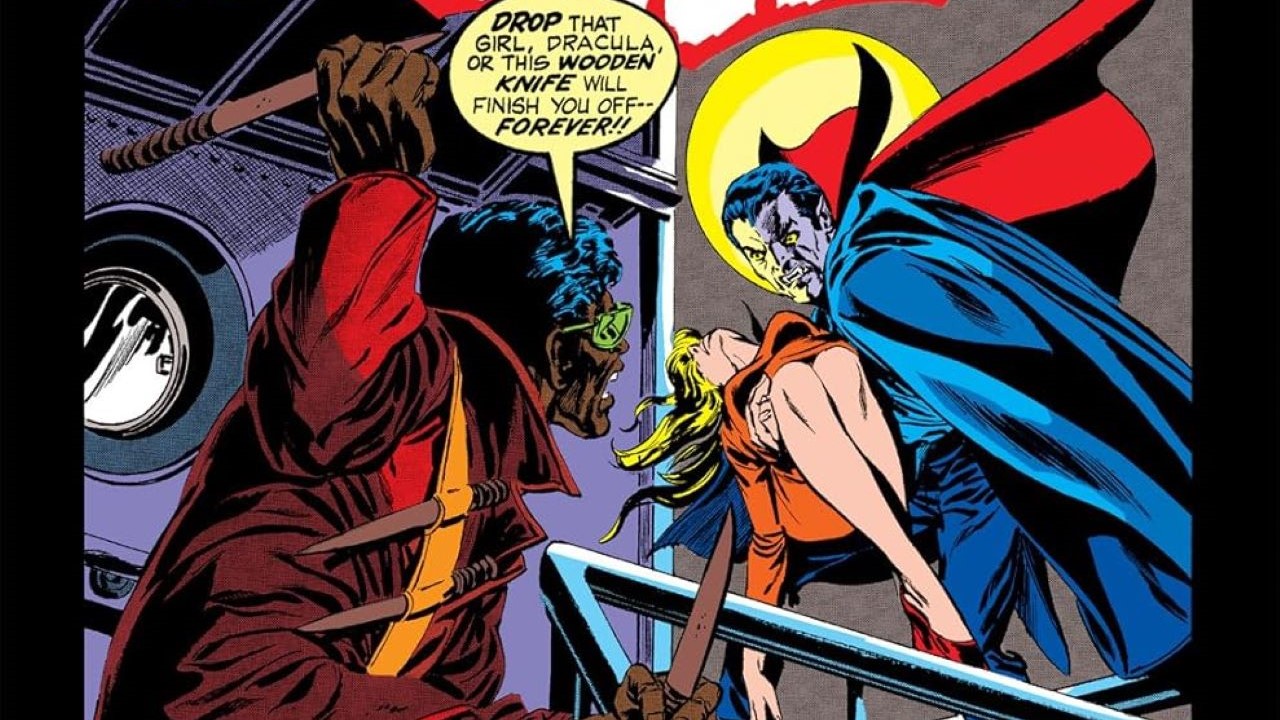
The Comics Code, censorship guidelines that dictated what could and couldn’t be depicted in comic books since 1954, became less strict in the 1970s. Comic publishers began ignoring or meeting the bare minimum of the Code by then. By the 1970s, comic books could depict violence more realistically, graphic death, racism, and even drug use. Comics books were sweetly light-hearted, goofy, and even downright silly in the Golden and Silver Ages. Then came the most valuable comic books of the 1970s, or the Bronze Age.
Bronze Age comic books lost their innocence in the 1970s. More comic book characters of diverse races and ethnicities were also introduced in the Bronze Age. It was during the Bronze Age that comic book characters finally grew up. They began to reflect the travails of the real world more.
It is also why collectors love comic books from this era so much. The Bronze Age would last from 1970 to 1985. A lot of important comic book moments and character introductions occurred during this time. Here are three valuable Bronze Age comics you should know about.
1. Tomb of Dracula #10 (July 1973) Marvel Comics
The Blade trilogy of films starring Wesley Snipes proved that comic book films could be successful over a decade before the MCU. (Legend has it that Wesley Snipes wanted to portray Black Panther, but the CGI limitations of the 1990s hampered his ambitions.)
Oscar-winning actor Mahershala Ali was picked to portray Blade in 2019. However, the film suffered setbacks and rewrites and will probably never happen with Ali. Still, that does not take away from the fact that Blade is a wildly popular character. A new Blade film starring another actor will materialize sometime within the next decade.
A copy of this comic with a CGC grade of 9.8 is currently worth $12,600. You can also get a CGC 6.0 grade copy of this issue for $726. If you have the money, I consider it to be a great investment. If the MCU can get back on track, the hype for Blade will only increase in the coming years and decades.
Buy a digital copy of this comic as investment research for $1.99 on Kindle now.
Suggested Reading: Blade: Black & White
This graphic novel reprints six of the best Blade comic books from the 1970s. These stories depict the early years of Blade and his fight against Dracula and other undead enemies.
Get this 146-page paperback for $4 at Amazon.
2. Green Lantern #76 (April 1970) DC Comics
This is a landmark Bronze Age comic. Green Lantern #76 would technically be titled “Green Lantern Co-Starring Green Arrow” for 14 issues.
It was the start of the landmark “Hard Traveling Heroes” storyline that produced gritty stories reflecting the social issues and anxieties of the 1970s.
Additionally, it’s the first time the two characters teamed up in a comic. Green Lantern has been losing popularity since his Silver Age reboot. So, the team-up was brainstormed by DC editorial to invigorate the character.
Also, this storyline heralded the end of the saccharine, silly, and innocent tales featuring mainly white characters saving the day, as normalized in the Silver Age.
Green Lantern Grows Up
In this issue, Green Lantern, an intergalactic space cop who wields a power ring that manifests his willpower, teams up with archer Green Arrow, who modern audiences know today from the show Arrow.
Green Arrow harangues Green Lantern about the fact that he is out of touch with the societal ills of planet Earth, though intimately familiar with the problem plaguing the intergalactic aliens in outer space.
Written by Denny O’Neil, this comic storyline features an infamous panel drawn by the legendary artist Neal Adam that depicts a black man accusing Green Lantern of caring more for blue-skinned, orange-skinned, and purple-skinned aliens than black-skinned beings on Earth.
A startled Green Lantern can’t defend himself. So, Green Arrow challenges him to accompany him across the United States to see how common people live.
The Hard Traveling Heroes encounter corruption, poverty, racism, environmental pollution, drug addiction, and societal disillusionment via the characters they meet as they travel the United States.
It’s one of the most important comic books of the 1970s because it mirrored the social ills of the time. Also, it examined the grey areas of human morality instead of portraying heroes as perfectly infallible beings who fight generic evil.
A copy of Green Lantern #76 with a CGC grade of 9.8 has a collectibles market value of $10,700.
Check out a digital version of this comic on Kindle for $1.99.
Suggested Reading: Green Lantern: The Sinestro Corps War
The 2011 Green Lantern film was an abomination. However, one of the best characters in the film was Sinestro, as portrayed by Mark Strong. Sinestro is the Joker to Hal Jordan’s Batman, to use an inelegant comparison in the comic books. At the end of the 2011 Green Lantern film, Sinestro creates a yellow ring that is fueled by instilling fear in others.
And that is the plot of Sinestro Wars. Sinestro creates his own yellow-themed corps to battle the Green Lantern Corps, whose power rings are fueled by willpower and confidence. It is considered one of the best Green Arrow stories ever.
Get the 400-page hardcover now for $40 at Amazon.
3. X-Men #94 (August 1975) Marvel Comics
Some modern comic book fans think that character diversification in comic books and comic book films is a recent phenomenon. It actually began way back in 1975 with the publication of X-Men #94.
In May 1975, Giant-Sized X-Men #1, a one-shot issue, introduced a new X-Men team. X-Men #94, which legend has it was supposed to be Giant-Sized X-Men #2, essentially rebooted the originally canceled 1960s series. Even though the X-Men characters served as an allegory reflecting the racial strife of the 1960s, the 1975 team introduced in issue #94 was the first culturally diverse X-Men team ever.
The only holdover from the original 1960s series was Cyclops. The new team consisted of Storm, an African, Nightcrawler, a German, Colossus, a Russian, Thunderbird, a Native American, and Banshee, an Irishman. This was the first comic of the Bronze Age to feature a team comprised of members of different ethnicities, races, cultures, and philosophical beliefs fighting together as heroes and protecting a world of humans who feared and hated them.
This comic is probably one of the most valuable comic books of the 1970s.
An issue of X-Men #94 with a CGC grade of 9.8 is worth over $36,700 on the collectibles market right now.
You can check out this comic, or research it as a collectibles investment by buying a digital copy. Buy one for $1.99 on Kindle now.
Suggested Reading: X-Men: Schism
This graphic novel collects 6 issues of the Scism event. Cyclops and Wolverine create a rift between the X-Men, forcing them to pick a side while a new common threat threatens to destroy them all.
In the comic books, Wolverine is 5 feet 3 inches, but is a womanizer, able to get the attention of Jean Grey. Cyclops loved Jean Grey even though he did her dirty in the comics. Jean was dead at the time this comic was published in 2012, but simmering tensions over the love triangle and differences in their operating styles caused both men to come to blows.
The X-Men is a soap opera at heart, and it is satisfying to see these heroes finally work out their frustrations with superhero violence.
Get the 158-page paperback for $28.99 at Amazon.
Most Valuable Comic Books of the 1970s (It Pays to Know)
It’s important to know why the comic books you collect are valuable. Comic books don’t sell for hundreds, thousands, or hundreds of thousands of dollars for random reasons.
You don’t have to be a comic historian, but knowing such things can be beneficial when it comes time to resell to hardcore collectors.
This post includes affiliate links. If you purchase anything through these affiliated links, the author/website may earn a commission.
You May Also Like…
- 10 Comic Book Film Memorabilia You Must Own Now
- Comic Book Sleeves For Large Collections
- 10 New Comic Book Characters Who Didn’t Take Off
- Here’s Why Superman Will Never Really Die
- 12 Unforgettable Comic Book Moments That Left Fans Speechless
The post Bronze Age Gold: The Most Valuable Comic Books of the 1970s appeared first on Personal Finance Advice.







